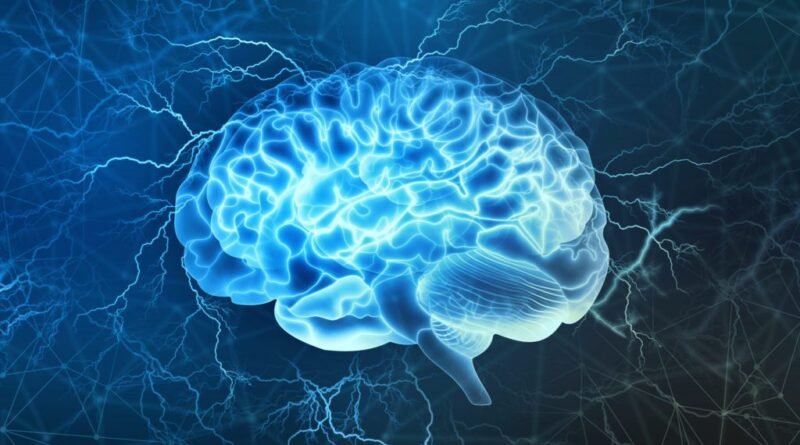MIT Study Finds How Rare Gene Variants May Lead to Alzheimer’s
Every three seconds, somewhere in the world, someone faces dementia, resulting in more than 10 million new cases each year. Alzheimer’s disease is the most common form of dementia, slowly erasing memories, altering thinking and behavior, and deeply affecting not only those diagnosed but also their loved ones. Although there is still no cure to stop the disease, there are therapies that help ease its symptoms. Hope for a better understanding comes from new research by neuroscientists at MIT, which reveals how rare variants of the ABCA7 gene may increase the risk of developing Alzheimer’s disease. Discoveries like this represent steps forward.
In the study ‘ABCA7 Variants Impact Phosphatidylcholine and Mitochondria in Neurons,’ the researchers presented their findings. Djuna von Maydell, an MIT graduate student and lead author of the study, addressed a few questions for Unknown Focus.
In Alzheimer’s patients, the beta-amyloid protein accumulates in large quantities and forms plaques between neurons, disrupting their function. Additionally, tau proteins inside neurons form tangles, interfering with communication between nerve cells.
Rare variants of ABCA7
ABCA7 is a gene that gives instructions to a protein that helps cells move fats (lipids) through cell membranes. In a small number of the population, this gene has a rare variant that leads to disturbed functions of cells and mitochondria, the powerhouse of the cell, important for healthy neuronal function. How? These variants disrupt lipid metabolism, including phosphatidylcholine, whose dysfunction, the study suggests, leads to impaired mitochondrial function, neurons becoming hyperactive, and accumulation of beta-amyloid, possibly through changes in membrane stiffness.
The researchers used brain tissue samples from the ROSMAP study, which follows older adults. Of the 1,200 samples, 12 had rare ABCA7 variants. After extensive quality control, they analyzed over 118,000 high-quality cells, including post-mortem neurons. Next, they introduced ABCA7 variants into induced pluripotent stem cells, which are capable of developing into neurons, and created mini 3D brain models in the lab consisting of neurons with ABCA7 variants. The results showed the same changes as those observed in the human sample.
The story of choline
The story of choline dates back to the mid-1800s in Paris. Today, we know that phosphatidylcholine, essential for the stability of cell membranes and mitochondrial function, is made from choline. In other words, cells use choline to produce phosphatidylcholine, and this metabolic pathway, first described in 1954 by Eugene Kennedy, is affected by ABCA7 variants. Researchers therefore tested CDP-choline treatment on neurons with ABCA7 mutations and mitochondrial functions, which reduces oxidative stress and neuronal hyperexcitability, and restores beta-amyloid secretion to normal levels. According to the study, “CDP-choline treatment at 100 µM significantly reduced neuronal hyperexcitability in dissociated cortical organoids, as assessed by electrophysiology.” In other words, CDP-choline reduces the excessive activity caused by this rare variant.
I don’t want to put you in a position where you have to make predictions, but I wonder to what extent this research could help develop drugs that target those early changes, potentially preventing or slowing the disease?
Djuna von Maydell: While lipid changes were first noted by Alois Alzheimer, their contribution to the disease has only recently come back into focus and may open new therapeutic avenues. Genetic studies point to lipid disruptions arising early in Alzheimer’s, making them attractive targets for disease-modifying interventions. Our study indicates that intervening on phospholipid metabolism may have beneficial effects, particularly in individuals with certain genetic risk factors such as ABCA7 variants. Although CDP-choline is one way to act on this pathway, our work, together with others, provides a foundation for developing more targeted treatments in the future.
“There’s more work to be done in this direction, but this suggests that ABCA7 dysfunction might play an important role in a much larger part of the population than just people who carry the rare variants.” What might the next steps be, and is there anything that, for example, people could do to help advance this research?
Djuna von Maydell: More work is needed to understand, at the molecular level, how the common genetic variant p.Ala1527Gly, which affects a larger portion of the population, alters ABCA7 function and lipid transport in cells. For instance, how does it change the lipid makeup of cell membranes, and how might that contribute to Alzheimer’s pathology? Are there other genetic or environmental factors that shape risk by acting on ABCA7 or related lipid transport pathways in the brain? To advance this research, we can draw on expanding genetic and metabolic datasets, and people can help by participating in studies, contributing open data, and advocating for funding to support this type of work.
Given more than 10 million new cases of dementia each year, MIT’s findings on rare ABCA7 variants represent only one piece of the puzzle, but they open a path that could make a difference.
More information: MIT Alzihaimer’s
Image: Alzheimer’s Disease and Dementia/https://alzfdn.org


